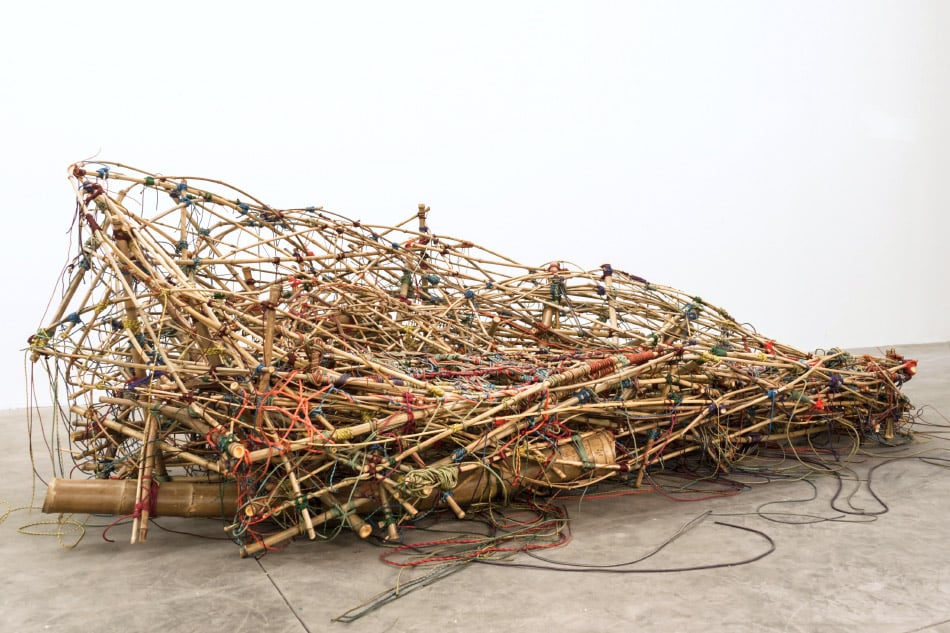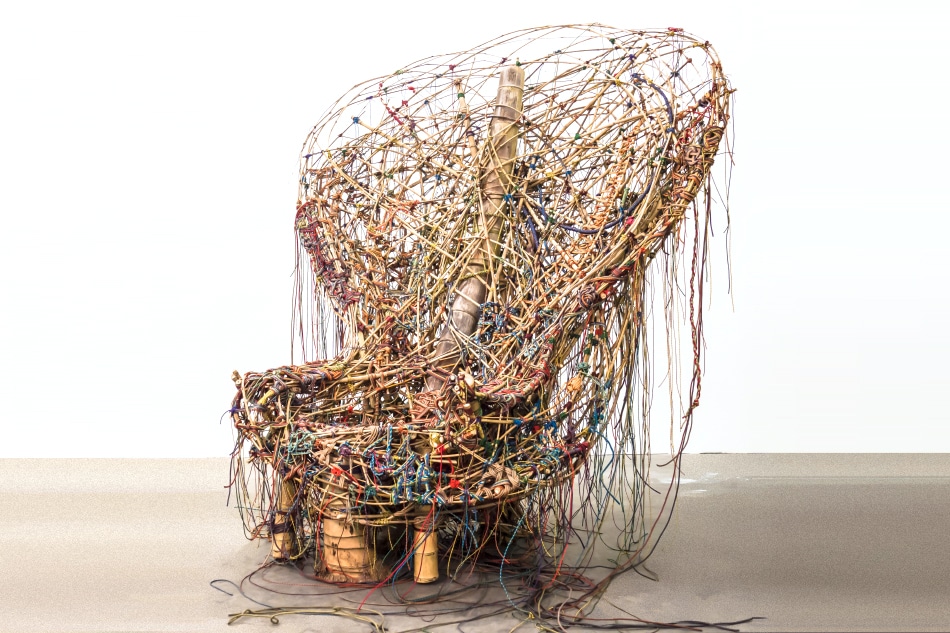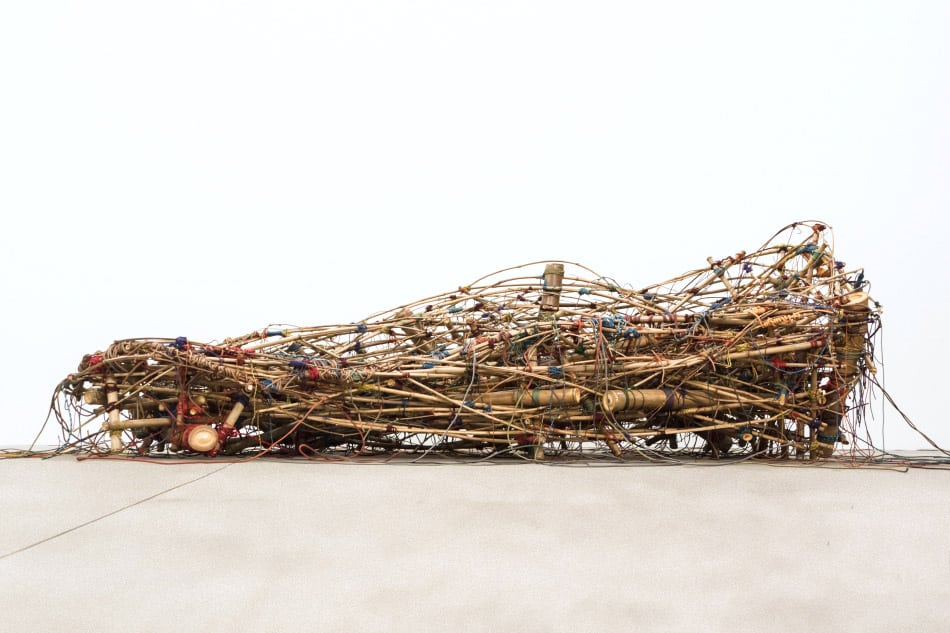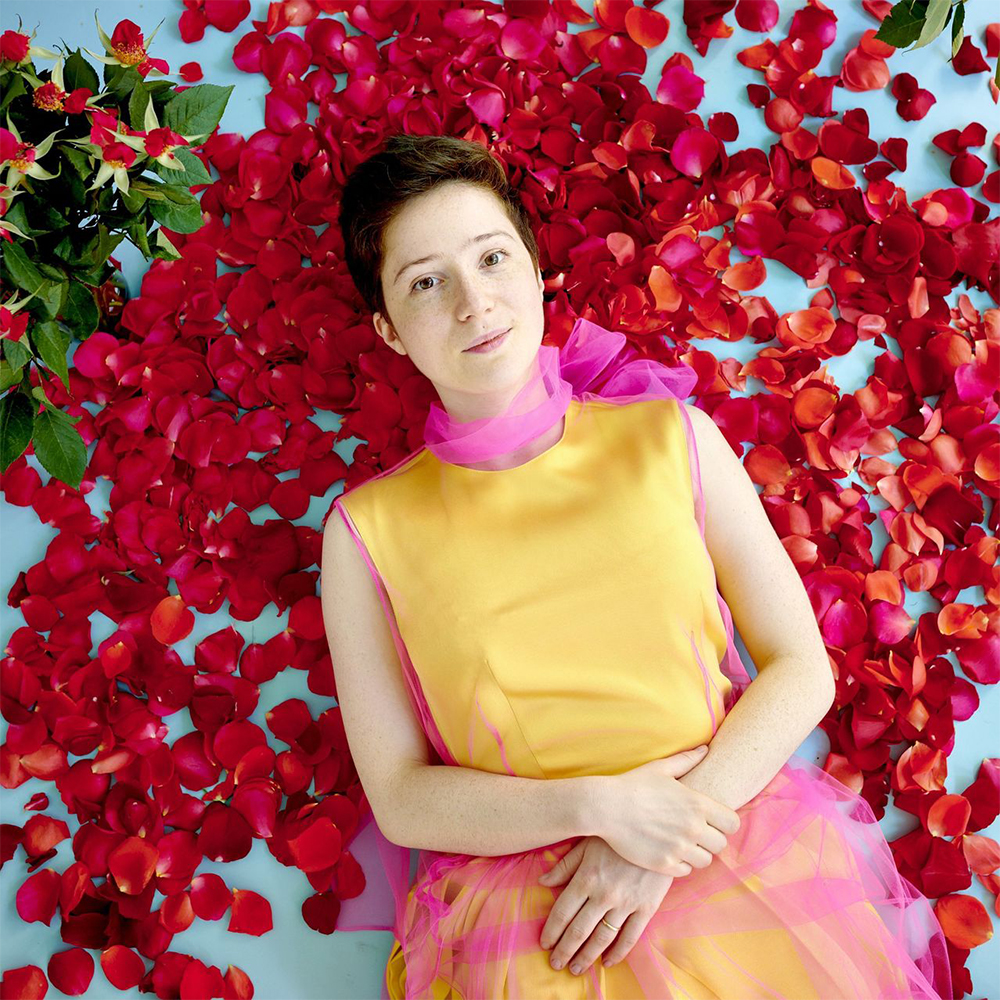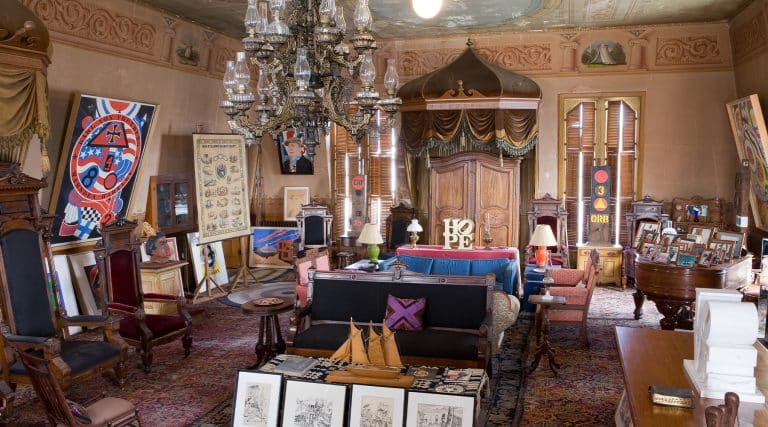December 4, 2017In the early 1990s, when I started writing about culture, people in the art world were talking about Doug and Mike Starn. Their appearance in the 1987 WHITNEY BIENNIAL — with creased, ripped and Scotch-taped photographs — had put them on the map.
They were sometimes known as the Starn Twins. This moniker gave them a supernatural-sounding power to my ears, making me think of the line from the old Super Friends cartoon: “Wonder Twin powers, activate!”
The Starn Twins’ Brotherly Love
No longer wunderkinds, the Starns now both have long crinkly 1970s-hippie-style hair that is partly gray, and to all but their closest intimates, they are impossible to tell apart. “Most of the time, people get it wrong, even the people who know us,” says Mike (probably) when I arrive at the their 40,000-square-foot studio, formerly the Tallix foundry, in Beacon, New York.
Growing up in southern New Jersey, the twins started making art together in their teens, and they have embraced the instinct to turn play into work, and vice versa, something that marks the best and most creative artists.

Doug and Mike Starn’s 40,000-square-foot studio in Beacon, New York, contains, from left, parts of (Any) Body Oddly Propped and Big Bambú. Top: A detail of So Swishy in Her Satin and Tat, 2017.
The Starn Twins’ Signature Big Bambú Inspires Urban Tree Climbers
The largest room in their vast, airplane-hangar-like studio is dominated by part of the Starn brothers’ signature work, Big Bambú, which is composed of a complex series of BAMBOO poles attached by colorful rock-climbing cords. It’s much bigger than most houses, even McMansions, and it’s hard to apprehend in one glance; your eyes have to adjust to take it all in. It’s not a surprise that these two grew up climbing trees.
The Starn Twins already had behind them a long career as full-time artists, notably in photography and sculpture, when, IN 2010, the METROPOLITAN MUSEUM OF ART put Big Bambú on its roof. The response was rapturous and intense, with more than 610,000 visitors crowding in to climb to its upper reaches. Being able to clamber up the sculpture was part of the fun — it represented some kind of apogee of the interactive-art trend. “Since the Met, the Bambú has taken up sixty percent of our time or more,” Doug (probably) tells me. There have been nine larger iterations of the piece, most of which were temporary.
“It was only after we started making it that we found out what a joy it was, and that we were building a wilderness with a group of people who became like family to us.”
Big Bambú Can Always Be Bigger
The way the Starn Twins talk about Big Bambú is unusual — to them, it’s a living organism. “It’s always complete, but it’s never the same,” says Mike. “It’s always growing.” The version in their studio forms, at one end, a huge wave-like shape that seems to be forever cresting. “It’s built as a mass of random interdependence, and once we have the scale we want, it reaches out in the wave,” says Doug.
“It started out as pure philosophy,” says Mike (who is married to Anne Pasternak, the director of the BROOKLYN MUSEUM). But to create the piece, they had to hire expert rock climbers who built it from the inside. A community formed.
“It was only after we started making it that we found out what a joy it was, and that we were building a wilderness with a group of people who became like family to us,” Doug tells me. “That seemed like a beautiful new discovery for us.”
Big Bambú Sparks a Furniture Collaboration
Like some living things, Big Bambú has offshoots. “It started to grow furniture like fruit,” says Mike — not something you hear every day. Put another way, they are now making chairs and divans from bamboo, with the same intricately interlocking pieces and colorful cords but also with comfy cushions.
The Starns went on to work on the furniture with veteran dealer Cristina Grajales, who showed several pieces at DESIGN MIAMI/ in 2017. A fan-backed chair is particularly striking, with something Southern in its overall outline. But its name — All the Nightmares Came Today — tells you that these pieces are a little pricklier than your average furniture.
Grajales also showed a series of photographs of the Starns’ Big Bambú installations around the world, as well as a fragment from one of the iterations.

Black Pulse 4 (lambda), 2001
The Starn Brothers Came Far from Their Start
To the Starns, the evolution of their work — which would have been impossible for most people to predict based on their early photography — makes intuitive sense. “We always insisted our photographs were objects,” says Doug. “They’re just two-dimensional sculptures.” In the studio, not far from Big Bambú, are some striking large-format images of leaves that they’ve been working on.

The Starn Twins’ studio. Artworks, clockwise from top left: Daruma’s Immodest Eye work print, 2007; Portrait of Lee Balter, 2016; mock-up for It Must Be Love, It’s a Bitch (painting on LP album covers, 2016-17); untitled mock-up for a painting on LP album covers, 2017; ’Nuff Said and That’s the Way It Is, paintings on LP album covers, metal and magnets, 2017.
But as is often the case with the Starns’ work, the pictures are not what they appear to be. “No camera is used,” says Mike. “We use a scanner. We take a flat leaf and scan it with light coming through it. And then in Photoshop, we start stripping away the skin, so you are just looking at the veins.”
Another project is a uniquely Starnian portrait series: Imagine an oversize grid on a wall some 12 feet high. On one side of each square is a piece of a pixelated portrait; on the flip side is an actual classic rock album cover. Each square is magnetized, so you flip them over at will, adding a choose-your-own-adventure element to territory plumbed by everyone from the POINTILLISTS to Chuck Close. The image could be mostly face but with the area around the eyes replaced by albums from Supertramp and David Bowie.

The Starn Twins work on an All the Nightmares Came Today chair in their studio.
“We’re always about making work that’s somehow about people, but we’ve always been too shy to actually photograph them,” says Doug, laughing. “And we thought, ‘Well, let’s change that.’ ”
This new series feels strongly linked to Big Bambú in that it’s iterative, interactive and changing all the time. Ultimately, that’s not only the means of their work but the great Starn subject, too: Life goes on. As Mike puts it, “The artwork is never finished. You can do anything with it and continue it.”

